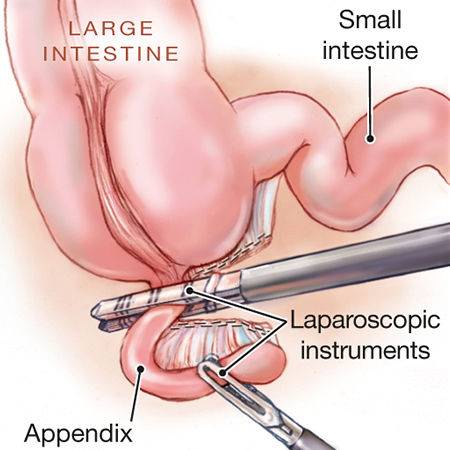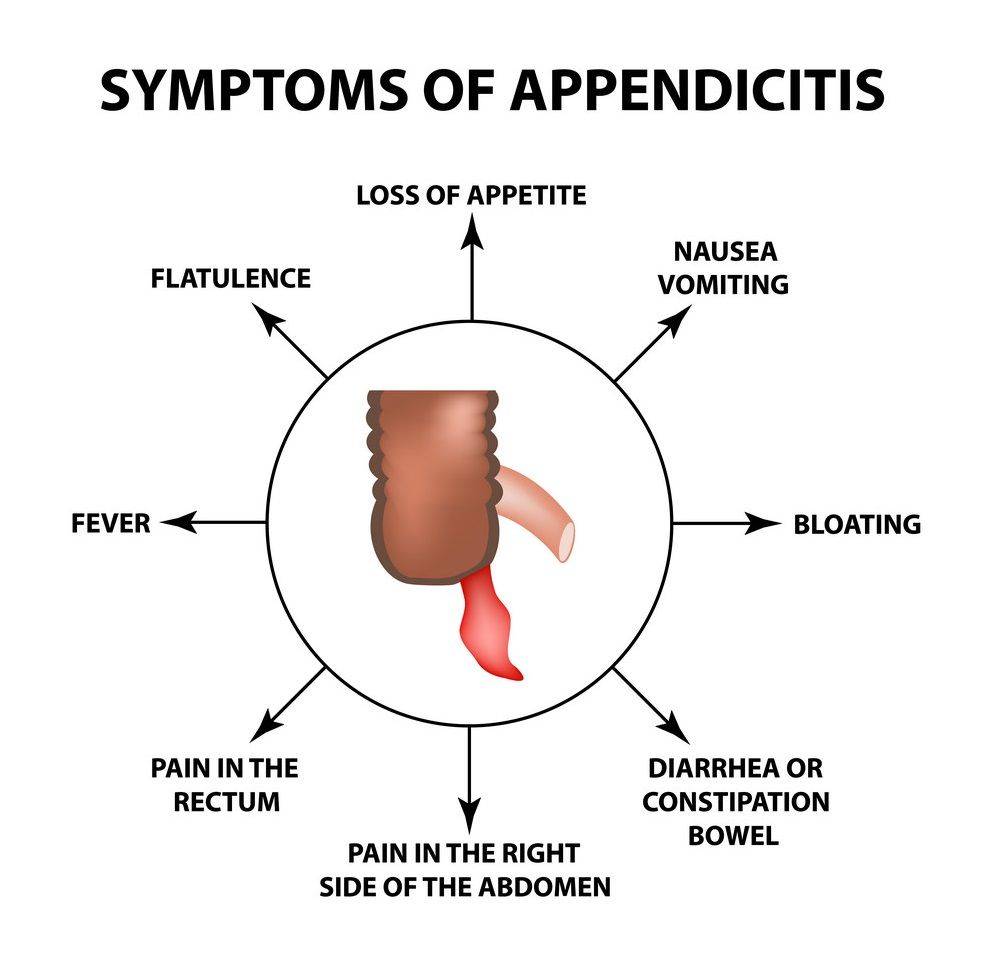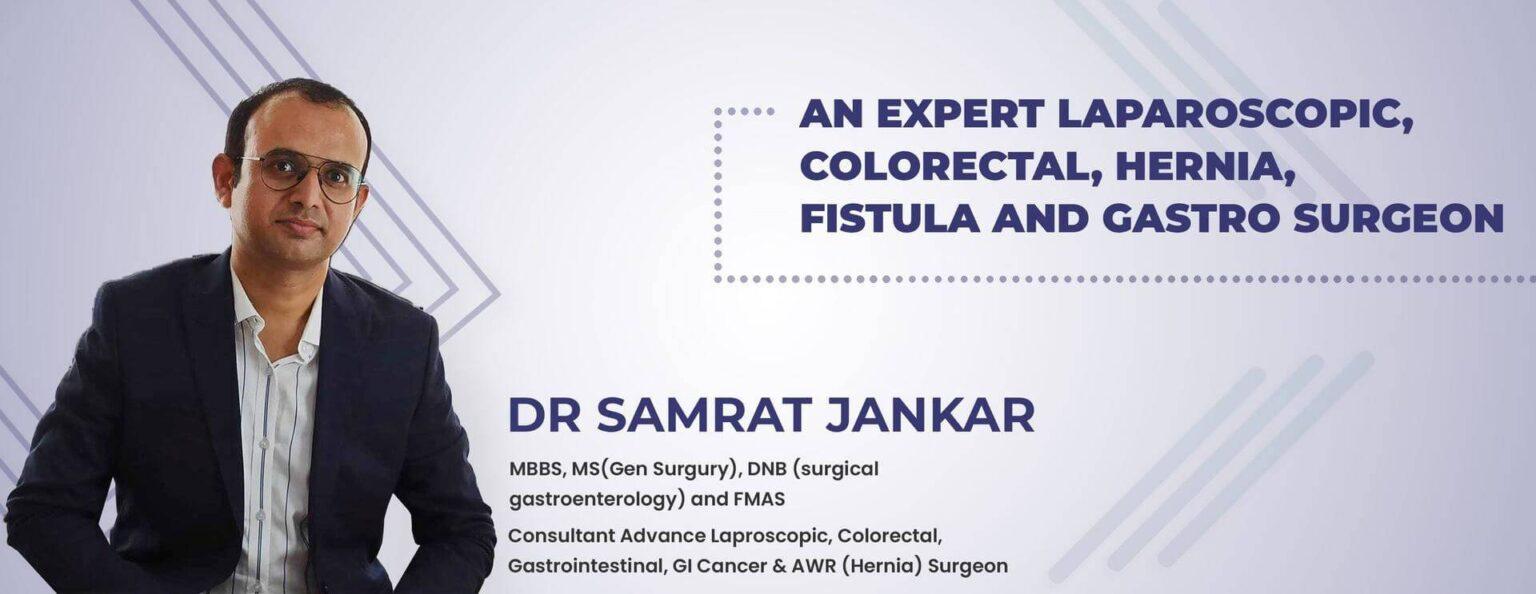Laparoscopic Appendectomy - Dr. Samrat Jankar
Dr. Samrat Jankar, one of the best gastroenterologist in Pune, is one of the most preferred surgeons for laparoscopic appendectomy in Pune for his extensive experience and expertise in this field. Laparoscopic surgery offers several benefits, including faster recovery and fewer trauma and complications.
Before beginning, let us first understand what an appendectomy is?
The surgical removal of the appendix is known as an appendectomy. Surgeons usually carry out this procedure on an emergency basis. The appendix is a small pouch attached to the large intestine near your abdomen’s lower right part. Appendicitis is a painful condition that occurs when the appendix becomes infected.
Since the appendix may burst or rupture, allowing infectious contents to penetrate the abdominal cavity, doctors consider appendicitis a medical emergency. To avoid complications, the doctor removes the appendix before it ruptures. The procedure is called an appendectomy.

What are the symptoms of appendicitis?
Appendicitis causes abdominal pain, which is most often felt around the bellybutton. The pain could also spread to the lower right side of your abdomen. Additional signs and symptoms of appendicitis include:
- Fever
- Diarrhea
- Nausea
- Vomiting
- Loss of appetite
- Frequent urination
- Painful urination
If the appendix bursts, the person is likely to have a high fever and extreme abdominal pain.

Why do you need an appendectomy?
If you have symptoms of appendicitis, you will need an appendectomy to remove your appendix which is inflamed, swollen, and infected.
There is a significant possibility that your appendix could burst or rupture if you have appendicitis. It can happen within 48 to 72 hours of the onset of symptoms. This can cause peritonitis, a life-threatening infection in your abdomen.
Procedure for appendectomy
An appendectomy is a surgical procedure typically done by keyhole surgery, also known as laparoscopic surgery. Compared to open surgery, this technique is less invasive. That’s why more and more people opt for laparoscopic appendectomy in Pune. According to Dr. Jankar, laparoscopic surgeon in Pune “laparoscopic appendectomy may be done on an outpatient basis so that the patient can be discharged to recover at home.”
Step by step procedure for laparoscopic appendectomy:
- Generally, this procedure is done under general anesthesia.
- Dr. Samrat Jankar makes one to three small incisions in the abdomen and inserts a port, which is a special tool.
- He uses this port to inject carbon dioxide into the stomach to inflate it and make the organs in the abdomen more visible.
- The surgeon then inserts a laparoscope which has a lighted camera, into one of the incisions.
- Other instruments are used to locate, position, and extract the appendix.
- Dr. Jankar will then remove the appendix from one of the incisions, and sterile fluid is administered to remove any residual infectious material.
Then the surgeon removes the surgical instruments, allowing the carbon dioxide gas to escape, and uses sutures or bandages to seal the incisions. However, a laparoscope cannot always be used to complete the operation. If the surgeon cannot see the appendix well enough or if the patient has other health problems, in that case, the surgeon will perform an open appendectomy.
Recovery time
The recovery period depends on the severity of the infection and whether the appendix is ruptured or not. You will go home after 1-2 days in the hospital. But if the appendix has ruptured, you will have to stay in the hospital for longer. They will give you antibiotics and observe you for any signs of complications. Before you go home from the hospital. The surgeon will give instructions regarding restrictions and post-operation care to improve your recovery and minimize infection risk.
Complications
If you experience any of these symptoms during recovery, you should notify the doctor:
- Vomiting
- Fever more than 1010F
- Severe abdominal pain
- Not passing stool or gas for
- three days
- Persistent pain
- Swelling, redness, bleeding, or drainage from the incision site
- Watery diarrhea for more than three days
Recovery tips
- Do not lift objects weighing more than 10 pounds for few days after laparoscopic surgery.
- Before touching the area near the incision site, thoroughly wash your hands with warm water and soap.
- Follow the instructions of the doctor regarding bathing.
- Regularly examine the bandages for signs of infection, such as redness or smelly drainage from the incision site.
- Avoid wearing tight clothes that could rub against the incision sites and cause pain.
- The doctor will prescribe pain relievers. He will advise you to drink more water to avoid bowel obstruction.
- To reduce strain on the incision sites, place a pillow over the stomach and apply firm pressure before coughing or moving. It is known as splinting.
